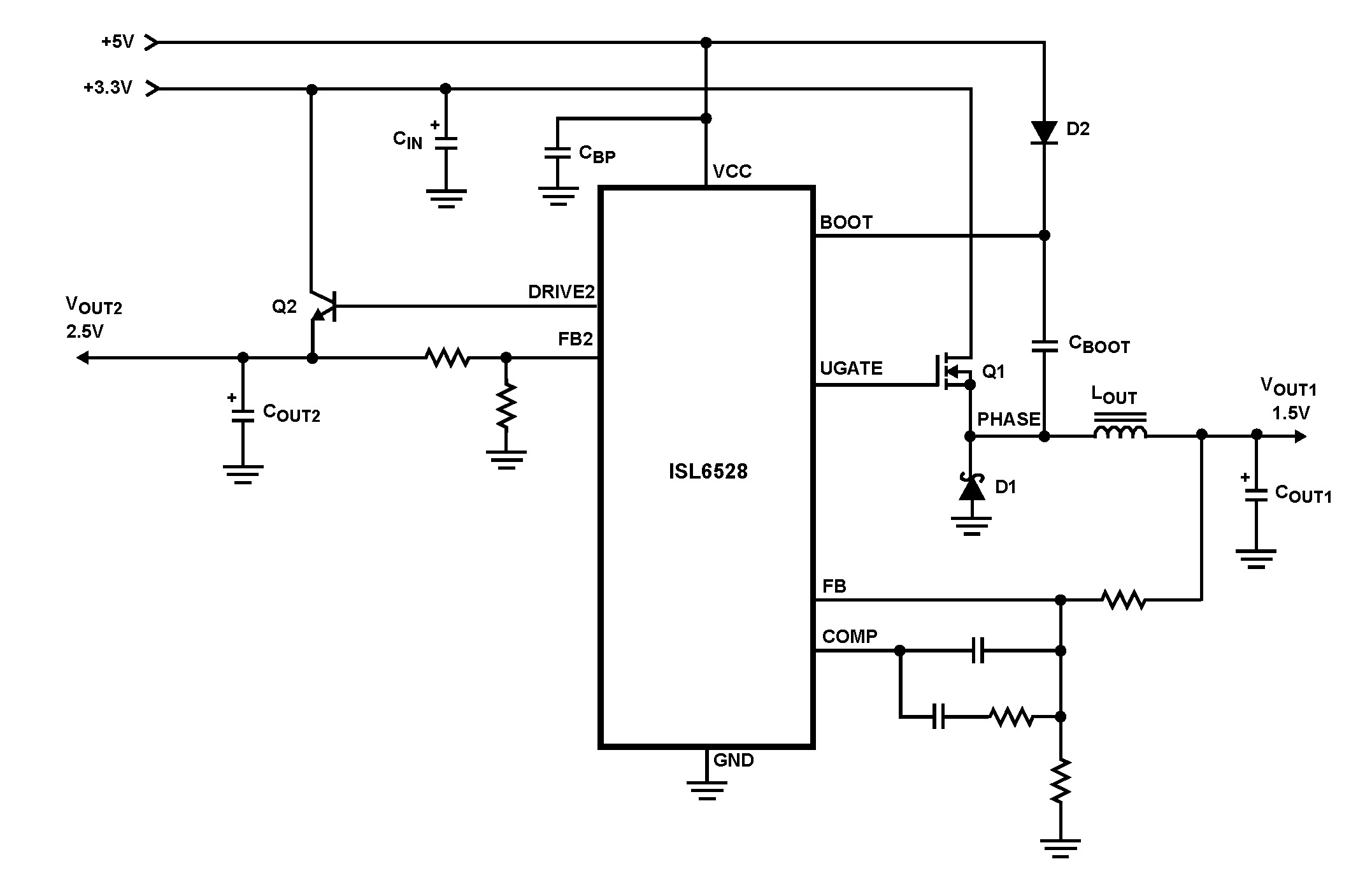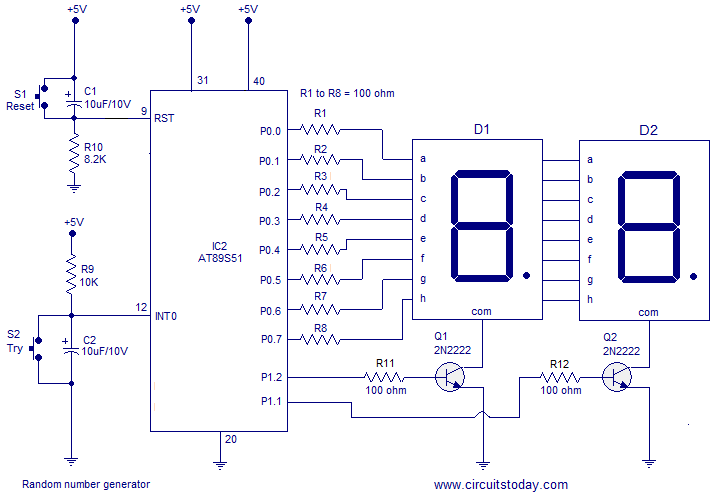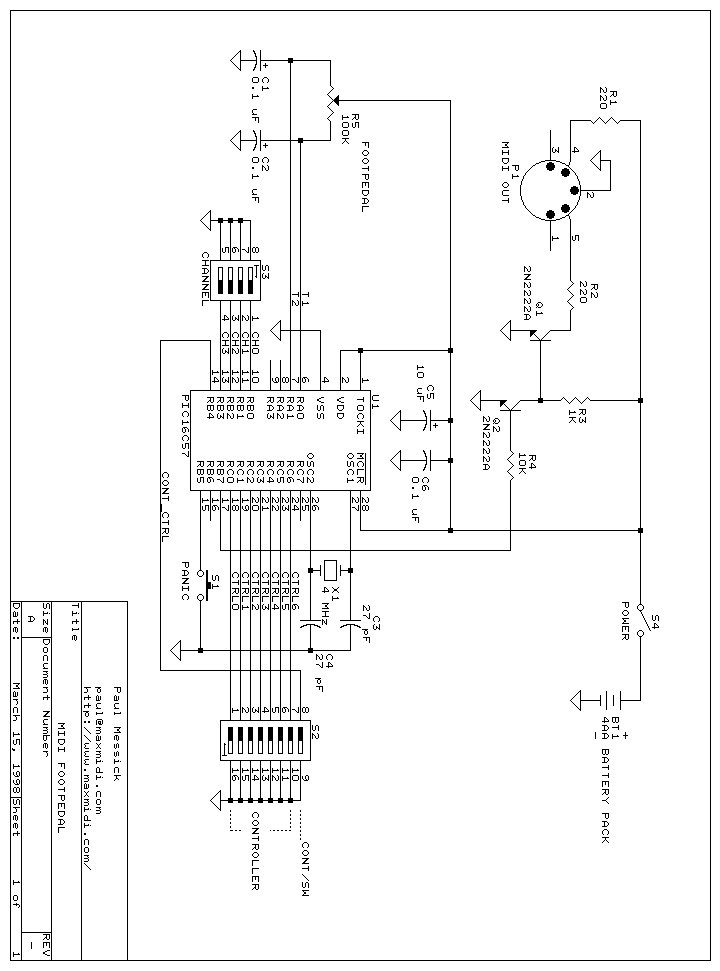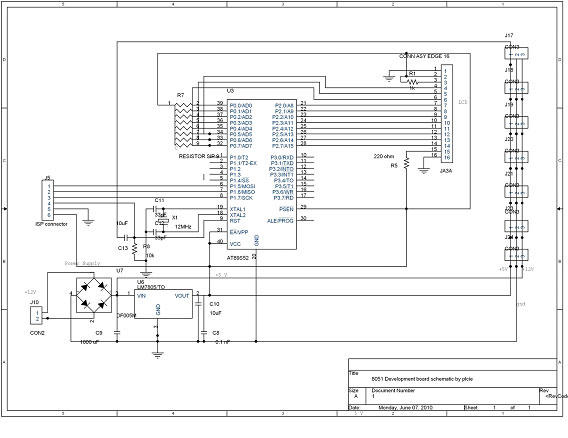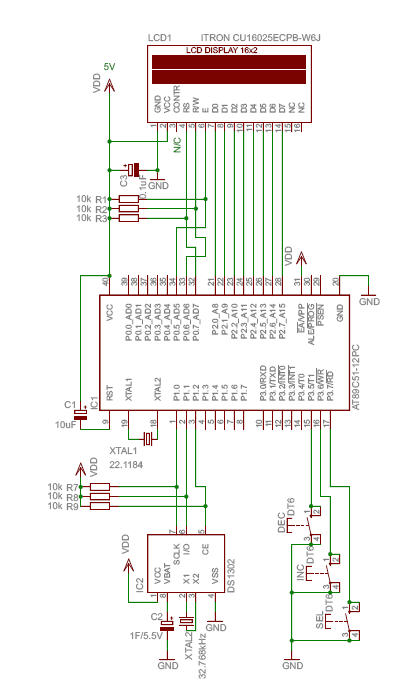
ISL8107 Single-Phase Pulse-Width Modulation (PWM) Controller with Wide (9V-75V) V
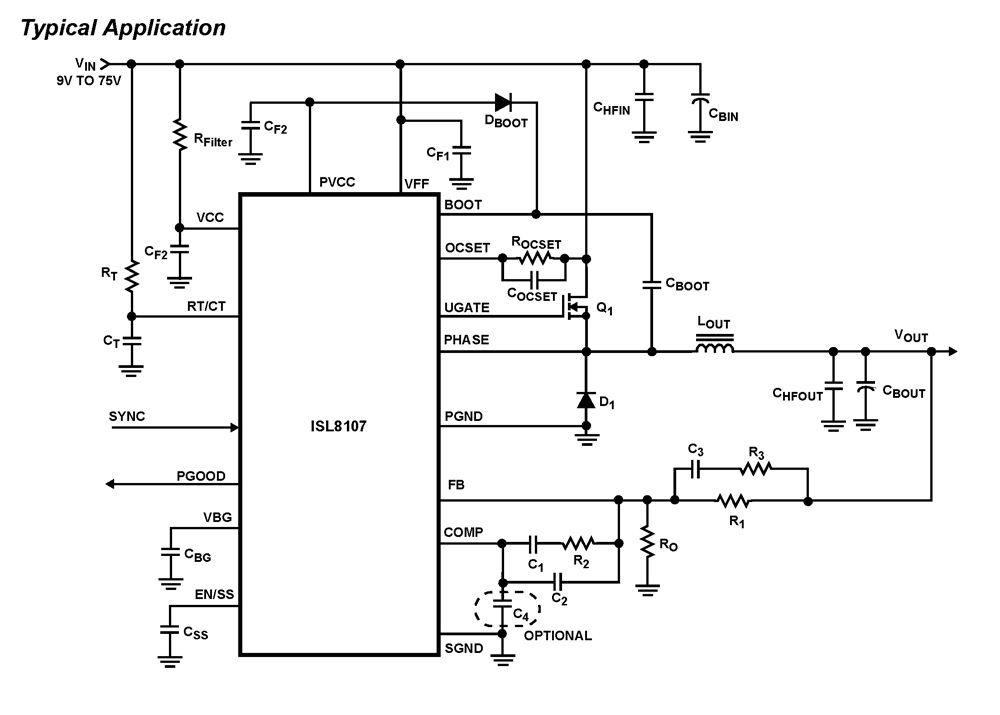
The ISL8107 is a single-phase, non-synchronous buck controller equipped with an integrated high-side MOSFET driver. It operates within an input voltage range of 9V to 75V. The internal reference voltage is 1.192V with a tolerance of ±1% across the industrial temperature range. The ISL8107 utilizes voltage-mode control with feedforward compensation to achieve optimal transient response and maintain a constant loop gain across a broad input voltage range. The switching frequency can be set between 100kHz and 600kHz using an external resistor and capacitor. Additionally, the switching frequency can be synchronized to an external clock signal via the SYNC pin. The ISL8107 includes features such as programmable soft-start, hiccup mode for short circuit protection, and over-temperature protection. Overcurrent protection is realized through the sensing of the MOSFET's rDS(ON), simplifying implementation while preserving converter efficiency.
The ISL8107 buck controller is designed for efficient voltage regulation in various applications, including power supplies for telecommunications, industrial equipment, and automotive systems. Its ability to handle a wide input voltage range makes it suitable for systems powered by different voltage sources. The integrated high-side MOSFET driver enhances performance by reducing component count and improving reliability.
The voltage-mode control with feedforward compensation is a critical feature that allows the ISL8107 to respond quickly to load transients, ensuring stable output voltage even under varying load conditions. The programmable soft-start feature is essential for preventing inrush current during startup, which can damage components and affect system reliability. The hiccup mode for short circuit protection is a safety feature that protects the circuit by temporarily shutting down the output during fault conditions, reducing the risk of thermal damage.
Synchronization capability via the SYNC pin allows multiple ISL8107 controllers to operate in unison, reducing electromagnetic interference and improving overall system performance. The implementation of overcurrent protection through rDS(ON) sensing is a cost-effective solution that does not compromise the efficiency of the converter, as it eliminates the need for additional current sensing components.
In summary, the ISL8107 provides a robust and flexible solution for power management applications, combining advanced features with ease of use, making it an excellent choice for designers seeking reliable and efficient buck conversion solutions.The ISL8107 is a single phase, non-synchronous buck controller with an integrated high-side MOSFET driver. The controller operates from 9V to 75V input voltage range. The internal 1. 192V reference voltage has a tolerance of ±1% over the industrial temperature range. The ISL8107 employs voltage-mode control with feedforward compensation to provide optimal transient response and a constant loop gain over a wide input voltage range. The switching frequency can be programmed from 100kHz to 600kHz by external resistor and capacitor. The switching frequency can be synchronized to an external clock signal through the SYNC pin. The ISL8107 features programmable soft-start, hiccup mode for short circuit protection, and over-temperature protection. The overcurrent protection is implemented using MOSFET`s rDS(ON) sensing. This approach simplifies the implementation without deteriorating the converter efficiency. 🔗 External reference
The ISL8107 buck controller is designed for efficient voltage regulation in various applications, including power supplies for telecommunications, industrial equipment, and automotive systems. Its ability to handle a wide input voltage range makes it suitable for systems powered by different voltage sources. The integrated high-side MOSFET driver enhances performance by reducing component count and improving reliability.
The voltage-mode control with feedforward compensation is a critical feature that allows the ISL8107 to respond quickly to load transients, ensuring stable output voltage even under varying load conditions. The programmable soft-start feature is essential for preventing inrush current during startup, which can damage components and affect system reliability. The hiccup mode for short circuit protection is a safety feature that protects the circuit by temporarily shutting down the output during fault conditions, reducing the risk of thermal damage.
Synchronization capability via the SYNC pin allows multiple ISL8107 controllers to operate in unison, reducing electromagnetic interference and improving overall system performance. The implementation of overcurrent protection through rDS(ON) sensing is a cost-effective solution that does not compromise the efficiency of the converter, as it eliminates the need for additional current sensing components.
In summary, the ISL8107 provides a robust and flexible solution for power management applications, combining advanced features with ease of use, making it an excellent choice for designers seeking reliable and efficient buck conversion solutions.The ISL8107 is a single phase, non-synchronous buck controller with an integrated high-side MOSFET driver. The controller operates from 9V to 75V input voltage range. The internal 1. 192V reference voltage has a tolerance of ±1% over the industrial temperature range. The ISL8107 employs voltage-mode control with feedforward compensation to provide optimal transient response and a constant loop gain over a wide input voltage range. The switching frequency can be programmed from 100kHz to 600kHz by external resistor and capacitor. The switching frequency can be synchronized to an external clock signal through the SYNC pin. The ISL8107 features programmable soft-start, hiccup mode for short circuit protection, and over-temperature protection. The overcurrent protection is implemented using MOSFET`s rDS(ON) sensing. This approach simplifies the implementation without deteriorating the converter efficiency. 🔗 External reference
